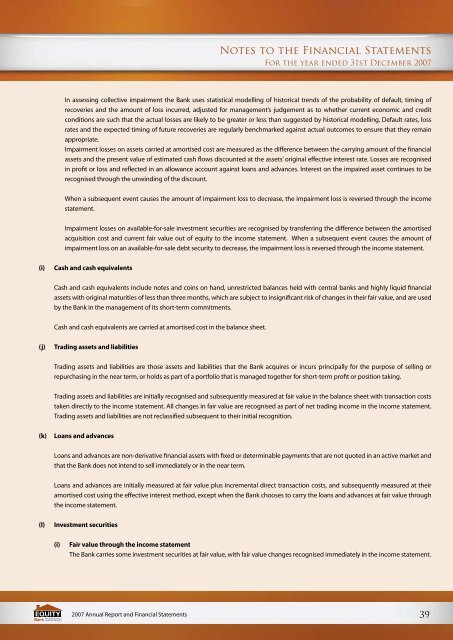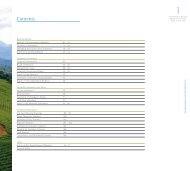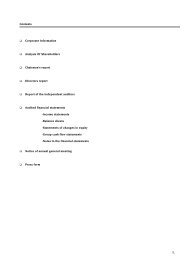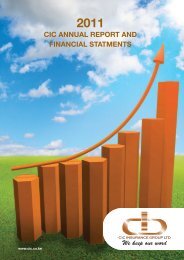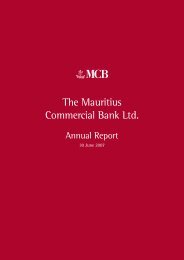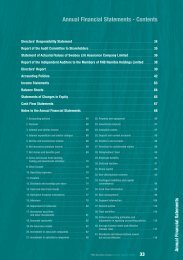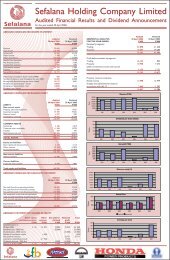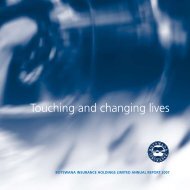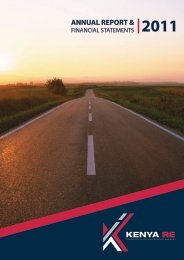Contents - Equity Bank Group
Contents - Equity Bank Group
Contents - Equity Bank Group
- No tags were found...
Create successful ePaper yourself
Turn your PDF publications into a flip-book with our unique Google optimized e-Paper software.
Notes to the Financial StatementsFor the year ended 31st December 2007In assessing collective impairment the <strong>Bank</strong> uses statistical modelling of historical trends of the probability of default, timing ofrecoveries and the amount of loss incurred, adjusted for management’s judgement as to whether current economic and creditconditions are such that the actual losses are likely to be greater or less than suggested by historical modelling. Default rates, lossrates and the expected timing of future recoveries are regularly benchmarked against actual outcomes to ensure that they remainappropriate.Impairment losses on assets carried at amortised cost are measured as the difference between the carrying amount of the financialassets and the present value of estimated cash flows discounted at the assets’ original effective interest rate. Losses are recognisedin profit or loss and reflected in an allowance account against loans and advances. Interest on the impaired asset continues to berecognised through the unwinding of the discount.When a subsequent event causes the amount of impairment loss to decrease, the impairment loss is reversed through the incomestatement.Impairment losses on available-for-sale investment securities are recognised by transferring the difference between the amortisedacquisition cost and current fair value out of equity to the income statement. When a subsequent event causes the amount ofimpairment loss on an available-for-sale debt security to decrease, the impairment loss is reversed through the income statement.(i)Cash and cash equivalentsCash and cash equivalents include notes and coins on hand, unrestricted balances held with central banks and highly liquid financialassets with original maturities of less than three months, which are subject to insignificant risk of changes in their fair value, and are usedby the <strong>Bank</strong> in the management of its short-term commitments.Cash and cash equivalents are carried at amortised cost in the balance sheet.(j)Trading assets and liabilitiesTrading assets and liabilities are those assets and liabilities that the <strong>Bank</strong> acquires or incurs principally for the purpose of selling orrepurchasing in the near term, or holds as part of a portfolio that is managed together for short-term profit or position taking.Trading assets and liabilities are initially recognised and subsequently measured at fair value in the balance sheet with transaction coststaken directly to the income statement. All changes in fair value are recognised as part of net trading income in the income statement.Trading assets and liabilities are not reclassified subsequent to their initial recognition.(k)Loans and advancesLoans and advances are non-derivative financial assets with fixed or determinable payments that are not quoted in an active market andthat the <strong>Bank</strong> does not intend to sell immediately or in the near term.Loans and advances are initially measured at fair value plus incremental direct transaction costs, and subsequently measured at theiramortised cost using the effective interest method, except when the <strong>Bank</strong> chooses to carry the loans and advances at fair value throughthe income statement.(l)Investment securities(i)Fair value through the income statementThe <strong>Bank</strong> carries some investment securities at fair value, with fair value changes recognised immediately in the income statement.2007 Annual Report and Financial Statements 39


